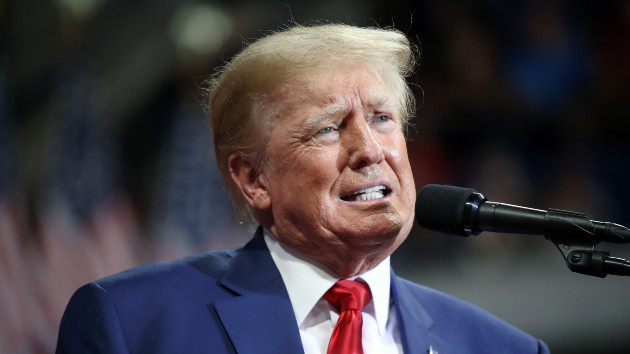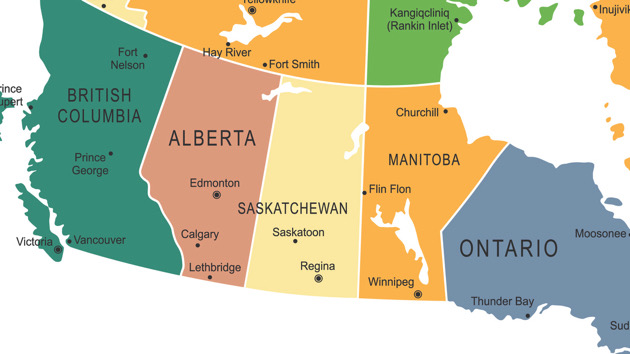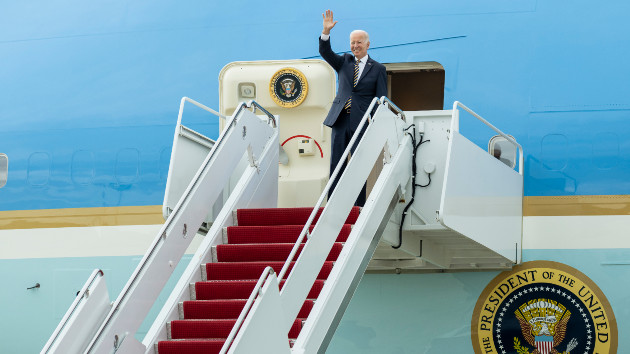
(WASHINGTON) — When Democrats left Washington in August, they did so on the wings of a series of policy wins, leaving town after pushing through many of President Joe Biden’s key climate and health care proposals on party-line votes.
But now, with midterms in November looming, the 50-50 Senate returns to Washington Tuesday with must-pass legislation on its plate, requiring bipartisan cooperation just as political tensions hit their peak.
It’s been over a month since lawmakers were last in the nation’s capital. Much awaits them.
Campaign on the brain
Lawmakers may be returning to the Capitol in person, but their minds will likely be far away on their home states and election battleground states.
This month marks the last work period for the House before the midterm election on Nov. 8. The Senate is scheduled to return for two weeks in October, but lawmakers in both chambers will no doubt use their remaining days in Washington seeking political wins to tout on the trail.
House Speaker Nancy Pelosi and Minority Leader Kevin McCarthy are expected to spend the weeks leading up to the election traveling the country, holding official events with incumbent lawmakers while also rallying supporters and fundraising for key races and candidates.
Clock is ticking on government funding
Chief among the priorities for Congress this month will be funding the government to avert a shutdown when current funds runs out on Sept. 30. With bipartisan agreement on an omnibus spending bill still seemingly far off, lawmakers are expected to spend September focused on passing a stopgap funding bill that will likely kick the concerns about long-term funding to the end of the year.
Passing the bill is required to keep the government open, but don’t mistake necessity with ease.
The Biden White House and Senate Democrats will try to use the short term funding bill to secure resources for a few outstanding priorities, knowing full well it could be their last opportunity before the election potentially shifts control of either chamber of Congress.
Administration officials are requesting about $47 billion in emergency aid to be tacked on to the funding bill to pay for additional Ukraine aid, COVID aid, and monkeypox and disaster relief. Expect many of those items to get Republican pushback.
The administration wants Congress to approve, as part of the stopgap funding bill, $22 billion for COVID relief. That thinking is in line with key Democratic appropriators who introduced a similar $21 billion supplemental to address COVID and other health concerns in late July.
But this is just the latest in a string of failed attempts by Democrats to approve COVID funding that they say is necessary to continue research and development of new vaccines and to provide free tests and vaccines.
Republicans have resisted the funding, arguing that some previously approved COVID funding has yet to be spent, and calling on Democrats to find ways to pay for the additional COVID relief. Attaching the aid to the larger stopgap bill could prove perilous for the entire bill.
Demands from Sen. Joe Manchin, D-W.Va., that his party included in the stopgap funding bill permitting reform legislation to expedite development of some energy projects, could also complicate matters.
Manchin, whose vote in favor for the Democrat’s Inflation Reduction Act was the lynchpin in the bill’s final passage last month, conditioned his support on a promise that his permitting reform proposals would make it onto the stopgap funding bill. The deal, brokered largely between Manchin and Senate Majority Leader Chuck Schumer, has sent progressives reeling, urging leadership not to attach legislation that could expedite oil and gas projects onto the funding bill.
“I am not going to be steamrolled into a bunch of fossil fuel give aways just because Manchin cut a deal in a closed room with Chuck Schumer,” said Rep. Jared Huffman, D-Calif., said in a statement. “He doesn’t get to run the show on something like this, and many of us will have a say on what that deal looks like if it even happens.”
Republicans are also threatening to withhold support for a funding bill that includes Manchin’s proposed measures.
“I will not vote for a continuing resolution that is part of a political payback scheme,” Sen. Lindsey Graham, R-S.C., said last month.
Trump and Jan. 6 back in focus
By the time FBI agents executed their Aug. 8 search on former President Donald Trump’s home at Mar-a-Lago, lawmakers were already far from Washington D.C. Many, including leaders of both parties, have chosen to keep quiet as the early stages of the legal battle surrounding the FBI’s actions unfold. But when they return this week, members on both sides of the aisle will be peppered with questions, and some of key committees will likely ramp up already growing calls for additional information to be provided to Congress.
Sens. Mark Warner and Marco Rubio, the top Democrat and Republican on the Senate Intelligence Committee, sent a letter to National Intelligence Director Avril Hanes and Attorney General Merrick Garland requesting a damage assessment of any national security threat posed by the mishandling of information. And Sen. Rob Portman, the top Republican on the Senate Homeland Security Committee, has also called on the FBI and Justice Department to provide Senators with a classified briefing on the raid.
“It’s unprecedented to have a raid like this on a former president’s residence, and that’s why I think the transparency should be unprecedented also,” Portman said on MSNBC on Thursday. “Obviously, we need to be careful that sources and methods are not being revealed through classified documents. They should never be taken from the White House in the first place, but we just don’t know the details yet. So yeah, I think it’s important we have that briefing.”
Meanwhile, the Jan. 6 select committee is expected to continue its work after a quiet August. The committee hasn’t held a public hearing since mid-July, but it’s expected to host additional hearings in September and to issue an interim report.
Republican Rep. Liz Cheney, who serves on the panel, lost her primary race handedly during the August recess. Her defeat, paired with GOP Rep. Adam Kinzinger’s retirement, means both Republicans on the committee will leave Washington come January. The committee is expected to issue its final report before they do.
Separately, the House Oversight Committee said it could release some of the former president’s highly-sought after financial records as early as this month after striking a deal with the administration.
Seeking consensus while highlighting differences
With the Inflation Reduction Act now signed, any remaining legislative objectives will have to pass muster of at least 10 Republicans at a time when the GOP will be more reluctant than ever to hand Democrats a victory.
Still, there may be a few bipartisan victories to eke out before the 117th Congress ends.
After Democrats fell short on their efforts to enact major election reform earlier this year, a bipartisan coalition formed to consider narrow changes to the Electoral Count Act. The group announced an agreement to clarify the ceremonial role of the vice president in certifying the results of a presidential election in late July. A vote on the reform could come before the year is out.
Republican Sen. Susan Collins is also leading efforts to find 10 Republicans to support a bill that would codify the right to same sex marriage into law. She’s been optimistic she can find support within her conference.
But Democrats are also only guaranteed a few more months in the majority. Expect them to use that time to highlight party priorities.
Schumer has vowed that Democrats will force Republicans to take another vote on lowering the cost of insulin, a provision ruled out of the Inflation Reduction Act.
Democrats have also vowed to make abortion rights a key issue on the campaign, and will likely force additional show votes on protecting abortion access on the floor, encouraged by Kansas voters’ decision to uphold the state’s constitutional right to an abortion in early August.
Copyright © 2022, ABC Audio. All rights reserved.









